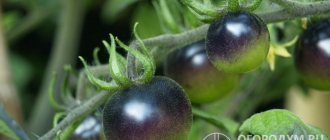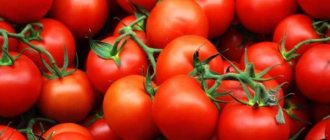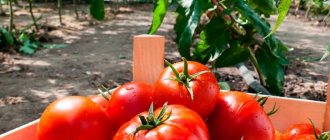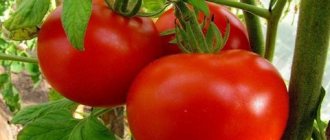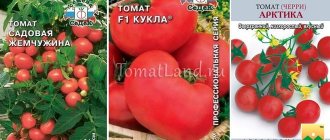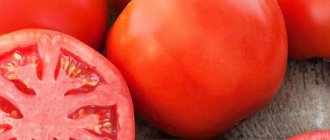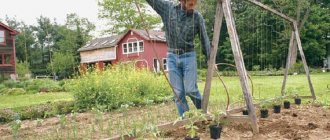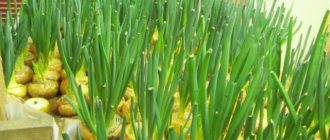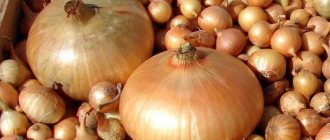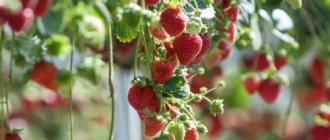- 50185
- tomatoes self-pollinating tomatoes
Tomatoes are self-pollinating plants, that is, one flower contains both male and female organs, which simplifies their pollination when grown indoors or in a greenhouse, since they do not require pollinating insects.
During self-pollination, pollen from the anthers of the stamens lands on the stigma of a pistil of the same color or neighboring ones.
But at the same time, it is better to help tomatoes with pollination so that more ovaries are formed, and, accordingly, more fruits.
In order to improve the pollination process, there are two main ways:
1. Artificial pollination is usually used when pollination by insects or wind is not possible, for example, in closed greenhouses or indoors in winter.
Artificial pollination can be carried out in three ways:
- Pollinate by hand using a regular brush or toothbrush. Just touch them to the tomato flowers one by one;
- Using a fan directed at the plants, the air flow created by the fan transfers pollen from one flower to another;
- Shaking: You can shake the plants themselves or their supports and garters.
2. Natural pollination is carried out by insects or wind, so it occurs only in the warm season and in open areas.
In greenhouses and greenhouses, the following methods are used to improve pollination:
- Attracting insects by planting various flowers of honey plants next to tomatoes;
- Ventilation of greenhouses and greenhouses, the wind also helps in pollination.
Pollination is best done in the morning, as pollen ripens at night. Pollinated flowers differ from unpollinated ones by having their petals bent back.
For open ground
Any variety is grown in open ground. But to increase productivity, self-pollinating hybrids can also be planted.
Mystery
An early ripening variety, the ripening period of which is approximately 90-95 days. Low-growing bush, medium foliage.
Crimson Giant
Large-fruited hybrid, fruit weight is 160-210 g. The skin and pulp are pink, the skin is thin.
Anastasia
Anastasia is a hybrid with a medium-early ripening period, approximately 100-115 days after sowing in the ground.
Roma
The hybrid matures in 110-115 days. The shape of the fruit is plum-shaped, the pulp is dense. Resistant to cold snaps and temperature changes.
Rio De Grande
Compact low-growing bushes, medium foliage. One bunch grows up to 8-12 tomatoes. It is immune to most diseases of nightshade crops.
Watercolor
The ripening period after planting is 100-125 days. The shape of the vegetables is elongated, there is a green spot near the stalk. The peel is smooth and glossy.
What are the advantages of such tomatoes?
Self-pollinating varieties are popular among gardeners due to their high levels of fertility and yield. The main advantages of tomatoes are their ease of care, excellent taste of the fruit, and also:
- stable immunity to bacteriological infection and fungi;
- ability to withstand different weather conditions;
- Fresh use, sale, preservation.
These varieties have no obvious disadvantages, except for the relatively high cost of seeds.
Indeterminate
These varieties of tomatoes can reach a height of 2 meters or more. In a greenhouse they grow a little lower.
Mushroom basket
A tall variety, the bush grows up to 1.7 m in height. The vegetables are large; without support, the bushes often break due to the weight of the fruits.
Pink king
The ripening period is 100-113 days. The stem grows up to 1.8 m in height. Pink in color, weighing from 200 to 450 g.
See also
Review of the best varieties of tomato seeds for the Rostov region open ground
Read
Donna Rosa
The ripening period ranges from 90 to 114 days. The fruits are large, 100-250 g. The peel and pulp are pink, smooth, without signs of ribbing.
Scarlet Mustang
Mid-early ripening period, 95-110 days after sowing the seeds. The shape of the tomatoes is pepper-shaped, elongated. The tip is pointed.
De Barao
The height reaches 4 m. A large-fruited hybrid with a medium-early ripening period (100-125 days). The peel comes in pink, red and yellow shades.
Honey saved
The weight of tomatoes ranges from 100 to 210 g. The skin is dense and does not crack as it ripens. It has a well-developed root system.
Intuition
The ripening period is 104 days. 4-5 tomatoes are formed in a brush. The skin is scarlet, the flesh is juicy.
Midas
Tomatoes are elongated, pepper-shaped. The peel is dense and does not crack as it ripens. The weight of tomatoes is 100-197 g.
Features of cultivation
The main features of growing self-pollinating tomatoes in greenhouses and other indoor areas:
- The need to pollinate manually if self-pollination is weak.
- It is also necessary to open the windows for ventilation and better self-pollination.
- It is not recommended to plant different varieties or different crops on the same bed or in the same greenhouse due to the threat of cross-pollination (if forced pollination is carried out).
Growing features depend on the type of tomato chosen. It is preferable to choose tomatoes whose bush size is more than 1 m. Such self-pollinating tomatoes will bear fruit longer, this will ensure a good harvest. To plant tall bushes you need 2-3 seedlings per 1 m2. Remove all stepsons 6-8 cm long.
General steps for good growth of any varieties are preliminary preparation of the soil (apply manure in the fall, potassium chloride in the spring) and seeds, growing seedlings in separate containers and their subsequent planting in the ground when the temperature does not drop below 15 degrees.
Semi-determinant
Semi-determinate varieties of tomatoes grow in height from 90 to 1.5.
Anyuta
Vegetables of medium size, thick skin, red in color. The pulp is fleshy, sugary in taste. Weight ranges from 90 to 110 g.
Japanese crab
The tomatoes are large, weighing from 200 to 500 g. The skin is red, completely ribbed. Sugary and juicy pulp. High-yielding hybrid.
Simone
The weight of vegetables is 150-355 g. The peel is red. After harvesting, tomatoes remain fresh for a long time.
Determinant
Determinate varieties are characterized by low-growing plants up to 80 cm high.
Ballerina
The pulp is juicy, with a high sugar content in the fruit. The bushes practically do not produce stepsons. Weight from 100 g.
Pink honey
Plants form ovaries even in unfavorable growing conditions. The fruits are small, weighing 100-120 g.
Eleanor
Red tomatoes. There are a small number of seeds inside. The yield is average, 5-7 kg of crop is harvested from an adult bush.
Gull
The ripening period is 85-100 days. As they ripen, they do not crack and are stored for a long time after harvesting.
Asteroid
The fruits are oval-shaped, weight from 150 to 175 g. The skin is slightly ribbed, the color of the pulp and skin is scarlet.
Lady
The fruits are collected in clusters of 3-4 pieces. Weight from 95 to 150 g. The pulp is red-pink in color.
What is stepsoning
Pinching is one of the agrotechnical techniques aimed at increasing the productivity of tomato bushes.
The procedure is carried out in order to remove useless branches that draw beneficial substances from the root and fruit, depriving them of sufficient nutrition.
By cutting off the shoots, it is possible to correctly form the trunk of the plant and increase the yield, since only those shoots on which the fruits will ripen remain.
If the tomatoes are not planted, then a lot of green mass will grow on the bushes, which does not contribute to increasing the yield. The less nutrients the leaves take, the more will go to the fruits.
Large-fruited
The average weight of large-fruited varieties is 200-300 g.
Chernomor
The color of the peel is rich red with dark stripes near the stalk. Tomatoes ripen in 100 to 120 days.
A gardener's dream
The bush is leafy, the leaves are small in size. High yield, up to 12 kg of tomatoes are harvested.
Russian soul
The maximum weight is 800 g. The color of the skin is scarlet, the flesh is sugary and fleshy.
Mikado
It has an average ripening period. The stems require pinching. The skin near the stalk is ribbed.
Gift
The skin is dense, red. The productivity is high, up to 10 kg of fruits are collected from one plant.
Cardinal
Near the stalk the skin is slightly ribbed and green in color.
A low-growing hybrid with medium foliage of bushes.
Monomakh's hat
The shape of the vegetables is irregular; there is a green spot on the skin near the stalk. Vegetables are meaty.
Queen of the Market
The pulp is not watery, fleshy, with a high sugar content. Medium early in terms of ripening.
Medium-fruited
Medium-fruited hybrids weigh up to 200 g, regardless of the period of technical maturity.
See also
Description and characteristics of the best indeterminate varieties of tomatoes for the greenhouse
Read
Peter I
Up to 7-8 ovaries are formed in the brush. There are 7-6 brushes on the plant. The shape of the fruit is round, the skin near the stalk is ribbed.
Slavic masterpiece
A low-growing hybrid, the trunk height is approximately 80-95 cm when grown in open ground. Red tomatoes.
Diamond
The pulp is dense, fleshy. Tomatoes have a regular round shape. Up to 18 kg of crop is harvested from the bush.
Aladdin's lamp
The skin is yellow, there is a green spot near the stalk. The shape of the tomatoes is pear-shaped.
Cherry tomatoes
Fruits weighing from 30 g. Sweet in taste, with a small amount of seeds inside.
Gold bead F1
The fruits grow in clusters, 9-12 tomatoes are formed in one. The skin color is yellow.
Cherry tomato F1
The skin is raspberry-colored, the tip of the tomatoes is pointed. Up to 12 tomatoes are formed in a brush.
Mariska F1
Tomatoes have a sweet taste. The color of the skin is crimson-red. The shape of the fruit is round. It is immune to powdery mildew and scab.
Tips for a good tomato harvest in a greenhouse
- It is better to grow several varieties of tomatoes in a greenhouse for different purposes. You need to grow pink, brown, low-growing, tall, red and brown tomatoes at once. In this way you can be sure of a good harvest. In addition to all this, there will always be varieties available for canning, salads, and decorating dishes.
- If you want to get large tomatoes from determinate varieties, you need to cut off several unripe fruits from each bunch. The rest of the tomatoes will grow. Some gardeners boast that after such simple steps the size of the fruit doubles .
- If the tomato bush is not growing as well as you want, the lower ovaries need to be cut off. It often happens that a young plant has a very hard time and the lower ovaries interfere with normal growth.
- There is one simple way to increase the growth and fertility of tomatoes. In the greenhouse you need to place several buckets of manure. At the same time, the level of CO2 concentration in the air increases and tomatoes grow very quickly. You can often hear about this method on the forum of gardeners and farmers.
As you can see, choosing tomatoes for a greenhouse is a very difficult decision, which can puzzle even an experienced gardener. Buying the right varieties of seeds for a greenhouse can be difficult. Not only personal experience, but also expert advice will help you make a difficult choice.
source
Early ripening
Early ripening varieties ripen within 80-95 days.
Semko-98 F1
The shape of the tomatoes is oval, weight 40-70 g. The surface of the peel is ribbed, glossy. Tolerates cold weather.
Typhoon
Height is 1.7-2 m. Productivity is 10-13 kg. Tomatoes are round in shape, with red skin.
Semko-Sinbad F1
Tomato weight 70-85 g. Round shape. The skin is smooth and glossy. The yield is high, 10-12 kg are harvested from the plant.
Search
Resistant to weather changes. Medium-sized plant. Tomatoes weighing up to 160 g.
Dina
The plant is low-growing, growing 70-80 cm in height. The tomatoes are yellow in color and large.
Ultra-early ripening
These varieties ripen in early summer.
Joy of Summer
The weight of the fruit is 120-150 g. The taste is slightly sour, not sugary.
Snow fairy tale
The color of the skin and interior is red. Tomatoes weighing 90-110 g.
Bear in the north
Tomatoes weighing up to 120 g. They ripen 70-84 days after planting.
Amber
A productive variety. The plant is of medium height, the foliage is weak. Tomatoes are regular oval in shape.
Specifics of care
Tomatoes that pollinate themselves require standard care.
- This is normal watering (the water should not be cold).
- Mandatory ventilation of greenhouses and greenhouses to regulate humidity.
- Timely removal of weeds.
- Immediately after watering, it is recommended to loosen the soil and mulch.
Fertilizers must be applied according to the schedule:
- No more than 3 feedings per season, since an excess of nutrients leads to the growth of a thick stem, abundant green mass, but small and tasteless fruits.
- The bushes need to be tied up so that the stem can support the mass of fruits that are being poured.
- Perform pinching if there are a large number of side shoots. You can find out exactly about the need for pinching on the seed package.
Late ripening
They ripen closer to September and are stored for a long time after technical maturity.
Persimmon
Large-fruited yellow hybrid. It tastes sweet. The skin is dense.
Black Prince
The pulp and skin are red-green. Weight up to 350 g. Productivity is high.
Giant pink
Pink-fruited hybrid, fleshy tomatoes. Suitable for making juices.
High-yielding varieties
Such hybrids produce up to 20 kg of yield per plant.
Biysk rose
The stems are medium-sized. Tomatoes weighing up to 300 g. High yield and disease resistance.
Bear Paw
3-4 large tomatoes ripen per cluster. The yield per bush is about 15 kg.
Union 3 and 8
Early ripening. The yield per bush is about 14 kg. Tomatoes are disease resistant.
Buddy
Tomatoes weighing up to 130 g. High sugar content in vegetables. Productivity up to 20 kg per bush.
Yarilo
Mid-early hybrid. Up to 12 kg of tomatoes are harvested from a bush.
Blagovest
Up to 15 tomatoes grow in a cluster. Up to 15 kg of vegetables are harvested from the plant.
What to pay attention to when choosing seeds
Summer residents usually choose tomatoes based on some important criteria. They are different, each variety has its own taste, purpose and amount of harvest.
Basic requirements for seeds that experienced gardeners usually pay attention to:
- Immunity and resistance to various tomato diseases.
- Abundant harvest. Some varieties are not designed for this.
- Why tomatoes are grown: they are used in salad form, for cutting, pickled or salted, to make healthy tomato juice.
- Taste: tomatoes can be sour, sweet, sour-sweet, bitter.
- Good company, reviews.
Tomatoes are also divided into varieties:
- Low or tall bushes;
- Large fruits, medium weight and small mini ones;
- For greenhouses or open ground;
- Shrubs with limited growing point or not;
- The taste is tomato or fruity;
- Color. There are different colors and shades: red, green, yellow, even black;
- Early, middle or late.
If a summer resident is in doubt about choosing self-pollinating varieties, then you can study a lot of useful information about them on the Internet. Since almost all of them have excellent disease resistance, they are not afraid of temperature fluctuations, frequent spontaneous weather changes, they bring an excellent harvest, and are pollinated naturally.
